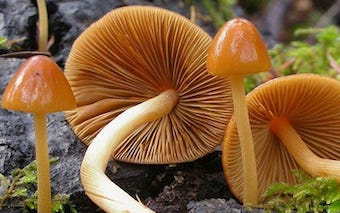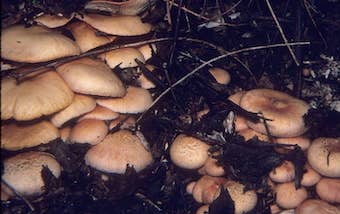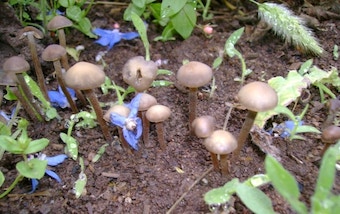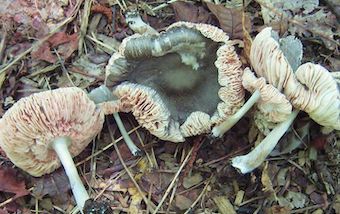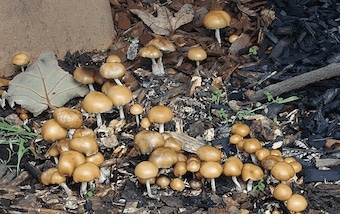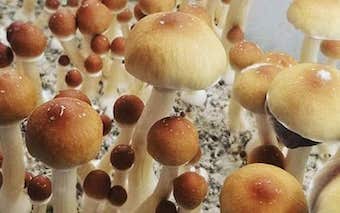Psilocybin Mushroom Species Guide
While Frshminds’ Psilocybin Mushroom Species Guide can’t take the place of an expert mycologist, and shouldn’t be used as a field guide to hunt mushrooms, it should serve you as a guide to understanding these wonderful organisms a little better and a source of information about what you are consuming.
Disclaimer: The information posted on this site is not meant to serve as a field guide and/or replace expert knowledge as many mushrooms are poisonous some are deadly poisonous and is purely informational. The responsibility for eating any mushroom or fungus must rest with the individual. If you plan to collect fungi to be eaten, misidentified mushrooms can make you sick or kill you. Do not eat mushrooms you are not 100% certain of. Frshminds takes no responsibility for damage caused by wrong identifications. If you continue, you agree to view this website under these terms.
Frshminds’ Psilocybin Mushroom Species Guide is designed to educate you on:
- The classification of mushrooms.
- What defines a psilocybin mushroom species.
- The psychoactive compounds in psilocybin mushrooms.
- The history, appearance, habitat and subjective effects of the common psilocybin mushroom species.
Classifying Psilocybin Mushrooms
Magic mushrooms, or more properly known as psilocybin mushrooms, are an informal class of fungi containing psychoactive compounds such as psilocybin, psilocin, and baeocystin. There are various groups of species with similar characteristics (“genera”) that contain psilocybin, such as Copelandias, Gymnopilus, Inocybes, Panaeolus, Pholiotinas, and Pluteus, but the most commonly cultivated and consumed genus of psilocybin mushrooms is the Psilocybe.
Over 300 species fall within this genus, as well as hundreds of “strains” or “subspecies”, each with unique variables of psychoactive compound ratio, and thus effects, duration, and onset. However, despite the differences, species within the Psilocybe genus possess key similarities:
- When you touch them (and not particularly harshly), they bruise a bluish color, which occurs because the psilocin in the mushroom makes contact with oxygen through the impact and damage to the skin.
- In early life, they feature a ‘veil’ between their cap and stem. Later this veil is reduced down to a thicker ring around the midsection of the stem, called an annular zone.
- The gills at the base of the cap are more dense in number and space absorbed then seen in other species.
- And they all change color depending on how water-saturated they are; see them in a dry stretch or right after it rains and they will actually look different.
If you’re more familiar with cannabis then psilocybe, it’s helpful to compare a “species” of cannabis, like Sativa vs. Indica, as akin to the difference between a Cubensis and a Semilanceata. One level down, it’s helpful to think of different strains of cannabis (when you refer to names like Afghan Kush or Sour Diesel, these are strains) as being akin to the different “subspecies” of Psilocybe mushrooms. Continue reading Frshminds’ Psilocybin Mushroom Species Guide to learn more about the psychoactive compounds that are found in psilocybin mushrooms, and about the 4 most common species in the Psilocybe genus.
Psychoactive Compounds of Psilocybin Mushrooms
Psilocybin and Psilocin
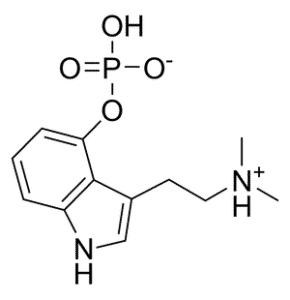
Psilocybin is a naturally occurring psychedelic prodrug (a compound that, after ingestion, is converted within the body into a pharmacologically active drug) found in magic mushrooms. Upon ingesting psilocybin mushrooms, the psilocybin reacts with your stomach acids to convert into psilocin, which stimulates development and absorption of serotonin in the brain.

Both psilocybin and psilocin are found in Psilocybes. Like natural serotonin in the brain, psilocin stimulates your serotonin receptors, resulting in your experiences with magic mushrooms. All of your hallucinations, your joyfulness, your feeling of being outside yourself and closer to spirituality – all of this is drawn from the chemical reaction in your brain.
Baeocystin
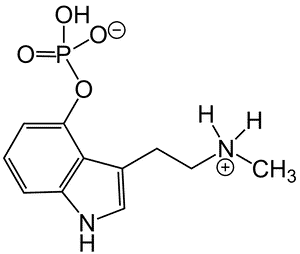
Chemically similar to psilocybin, Baeocystin is a lesser-known compound that is also found in Psilocybe mushrooms. Research suggests that baeocystin and psilocybin are similarly psychoactive in similar doses, but the research remains unclear, which is the main reason why there has been little research into this compound compared to psilocybin.
Common Species of the Psilocybe Genus
Psilocybe cubensis
History: If you’ve taken ‘shrooms, it was likely P. cubensis. As one of the easiest species to cultivate indoors, “cubes” were popularized in Dennis and Terence McKenna’s Psilocybin: The Magic Mushroom Grower’s Guide. The word “cubensis” translates to “coming from Cuba”, as with many species, denoting their place of origin in their scientific name.
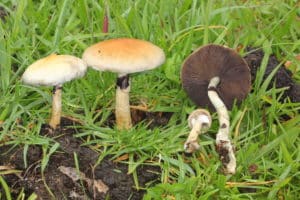
Appearance: Cubes are generally larger than other Psilocybes, likely due to generations of genetic isolation. They have thick stems and large, broad caps that are brown but increasingly pale as you trace them out to the margin of the cap where they are almost white, and fading to more golden-brown or yellowish with maturity.
Habitat: The cube likes the heat. Its natural environment is throughout the Southern Hemisphere, and in tropical climates in the Northern Hemisphere (there’s your Cuba reference). While this may not be their most appealing feature, these mushrooms typically grow on poop in farmer’s field.
Subjective effects: A cube’s effects depend on whether they are collected in the wild or cultivated. The naturally-occurring cube is relatively mild as a psychoactive. Cultivated sub-species like ‘Penis Envy‘, however, have shown much higher amounts of active compounds. In either case, expect to experience classic psychedelic effects like euphoria, love and unity; introspection and finding a ‘deeper meaning’, and visual effects.
Strains: Because cubes can be cultivated so widely and easily, most of the mushroom ‘strains’ you’re likely to encounter come from this species. For more information on these individual ‘strains’ or subspecies, check out our Psilocybe Cubensis Magic Mushroom Subspecies guide.
For more information on individual Psilocybe cubensis strains, read Frshminds’ Psilocybe Cubensis Magic Mushroom Subspecies guide.
Psilocybe semilanceata aka “Liberty Caps”
History: This mushroom probably started the modern magic mushroom movement. Famously, the first well-documented case of psilocybe intoxication occurred when a dad and his 4 children were foraging for mushrooms in London’s Green Park at the close of the 18th century, and were pleased to find plentiful Psilocybe semilanceata, and brought them home for dinner. We can assume that mom was NOT impressed.
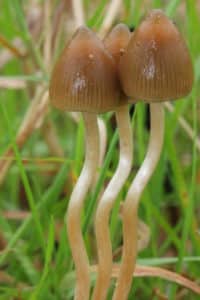
Appearance: Liberty Caps get their name from the very pronounced bell-shaped cap. While most psilocybe mushroom caps flatten as they mature, the Liberty Cap sees its nipple-shaped cap roll down as it matures. Liberty caps are smaller than most of their Psilocybe cousins, with a thin, yellow-brown stem – when they get wet, their brown coloring deepens.
Habitat: Liberty Caps are very widespread, growing alone or in groups, typically in grassy areas. They seem to thrive when sheep or cow poop are present, but unlike their Cube cousins, they do not typically grow on the dung itself. Unlike Cubes, Liberty Caps are found across the Northern Hemisphere in cooler, wetter climates (and appear in the Southern Hemisphere only where there are similar climates, as in Chile or New Zealand.
Subjective effects: Paul Stamets rates the Liberty Cap as the third most potent member of the Psilocybe species. The high concentration of psilocybin often results in a longer trip and a highly visual experience.
Psilocybe cyanescens aka “Wavy Caps”
History: Back to London we go (perhaps you’re inclined to book a trip with all of these wild magic mushrooms lying about), where Elise Wakefield, an English mycologist, first collected the species in the early 20th century, describing them in 1946 in Transactions of the British Mycological Society.
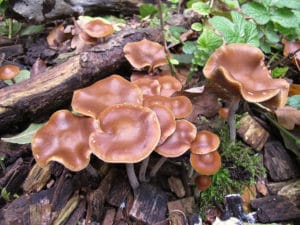
Appearance: Wavy Caps have rich brown caps that become wavy upon maturity, and become somewhat yellow when dried, with pale, thick stems. While Wavy Caps can look similar to Cubes, you’re best to make sure you identify them accurately, as some subspecies are poisonous.
Habitat: Wavy Caps are famed for the fact that they might already be in your yard. These ‘shrooms thrive in mulch and wood chips, just as you would find in award-winning gardens across North America and Europe. Their native habitat is thought to be the forests of the north-western United States, but these mushrooms have now spread to almost every continent.
Subjective effects: Wavy Caps are alot stronger than Cubes, typically containing 30 to 60 percent more psychoactive compounds. The experienced effects are classic and very similar to those with Cubes, but some psychonauts say the increased psilocybin content in Wavy Caps makes for a more intense, and visual, experience.
Psilocybe Azurescens aka “Flying Saucer Mushrooms”
History: Psilocybe Azurescens, or “Flying Saucers”, are a rare and potent species of the family, officially classified for the first time in 1996. First discovered by a group of Boy Scouts near the mouth of the Columbia river in the US Pacific Northwest (another great destination for those looking to hunt for magic mushrooms with Oregon legalizing personal use in early 2023, you won’t even need to hide your harvest).
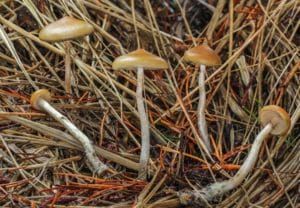
Appearance: The caramel-coloured caps start out cone-shaped and slowly flatten as they mature, resembling flying saucers. The stem is thin, dark brown at the base and whitens closer to the cap. The name Azurescens is derived from the blue, or “azure”, bruising that occurs when you handle them.
Habitat: These mushrooms are not naturally found across the globe. Flying Saucers grow in sandy soil, like dunes and seagrasses, and on loose, rotting wood. Flying saucers are found on the West coast of the U.S., from California to Washington. They can withstand chilly temperatures compared to other psilocybin-containing mushrooms, making them easy to cultivate outdoors in the U.S. and Europe.
Subjective effects: Flying Saucers, or “Azzies,” have been identified as perhaps the most potent Psilocybe species. Alongside intense visual hallucinations and profound alterations to consciousness, they can also induce temporary paralysis at high doses – not recommended for the newbie.

